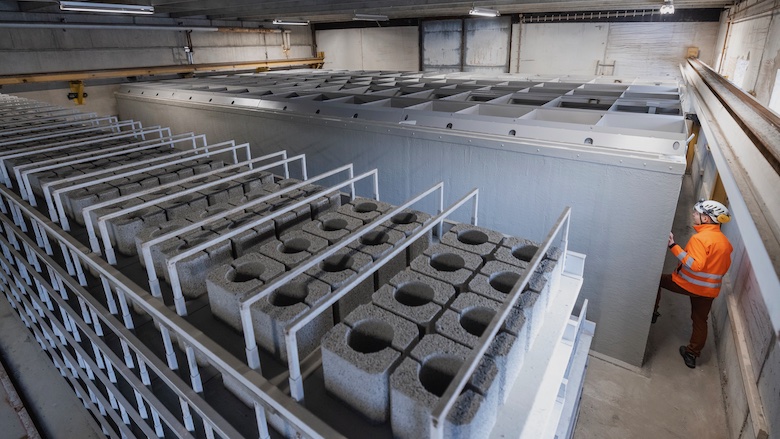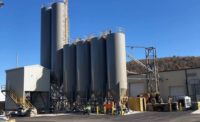A Finnish start-up is joining the tiny band of companies with technologies using concrete as a sink for industrial emissions of carbon dioxide.
A spin-off from the state-owned VTT Technical Research Centre recently secured funding to commercialize its system of mineralizing the greenhouse gas while curing precast concrete elements at atmospheric pressure.
“We have demonstrated in the pilot unit that our technology is capable of reducing the CO2 emissions of conventional concrete by 45%," notes Tapio Vehmas, CEO of the company Carbonaide Oy.
Newly secured $2 million of seed funding will help the company set up an integrated production line attached to a precast concrete plant at Hollola to demonstrate the technology at full-scale.
Carbonaide is not the first to use captured industrial CO2 in concrete. UK based Carbon8 Systems Ltd. uses the gas to manufacture concrete aggregate. Canada's CarbonCure Technologies Inc. injects CO2 into wet concrete while it's being mixed. Carbonaide's approach is different.
"We do not inject liquid CO2 into the concrete mix. In our technology, concrete is cured in a CO2 atmosphere ... we expose the concrete to CO2 for a much longer time than CarbonCure," explains Vehmas.
Having spent years studying CO2's negative effects on concrete, such as causing rebar rust, VTT turned the chemical reaction to its advantage, starting in 2010. From its work on carbon capture and utilization, VTT's Carbonaide team began probing the possibilities of using concrete as a CO2 sink.
Carbon dioxide diffusing into concrete during curing can establish "favorable conditions for the creation of carbonate minerals," notes Vehmas, who helped set up Carbonaide last year. "If you use the carbonation process, calcium oxide turns into a reactive binder."
In developing this concept into a commercial process, VTT's researchers ruled out high-pressure systems on cost grounds. An automated pilot that forces CO2 into concrete elements at atmospheric pressure was trialed inside a container at a concrete plant in Hollola starting in late 2021.
While the technology reduces concrete's carbon footprint, the additional use of cement replacement, such as granulated blast furnace slag, can make it negative. Carbonaide calculates the net carbon emissions at -60 kg per cu m of concrete compared with +250 to 300 kg per cu m for the conventional product.
Making concrete better than carbon neutral has obvious attractions for industry companies, such as the Finnish concrete producer Lakan Betoni Oy, which is providing some of the seed money. Such innovations "provide the means for the industrial-scale production of affordable low-carbon products," notes Lakan's CEO Juho Hiltunen.
The planned CO2 curing integration at a fully automated precast concrete production line will, hopes Carbonaide, be the first of 10 to be set up in the Nordic region by 2026. With the unbounded ambition of a start-up, the company sees its technology binding 500 million tons of CO2 a year in 10% to 20% of global concrete production by 2050.



---Urban-Mining-Industries-Pozzotive_ENRready.jpg?height=200&t=1663257031&width=200)




